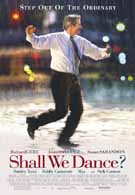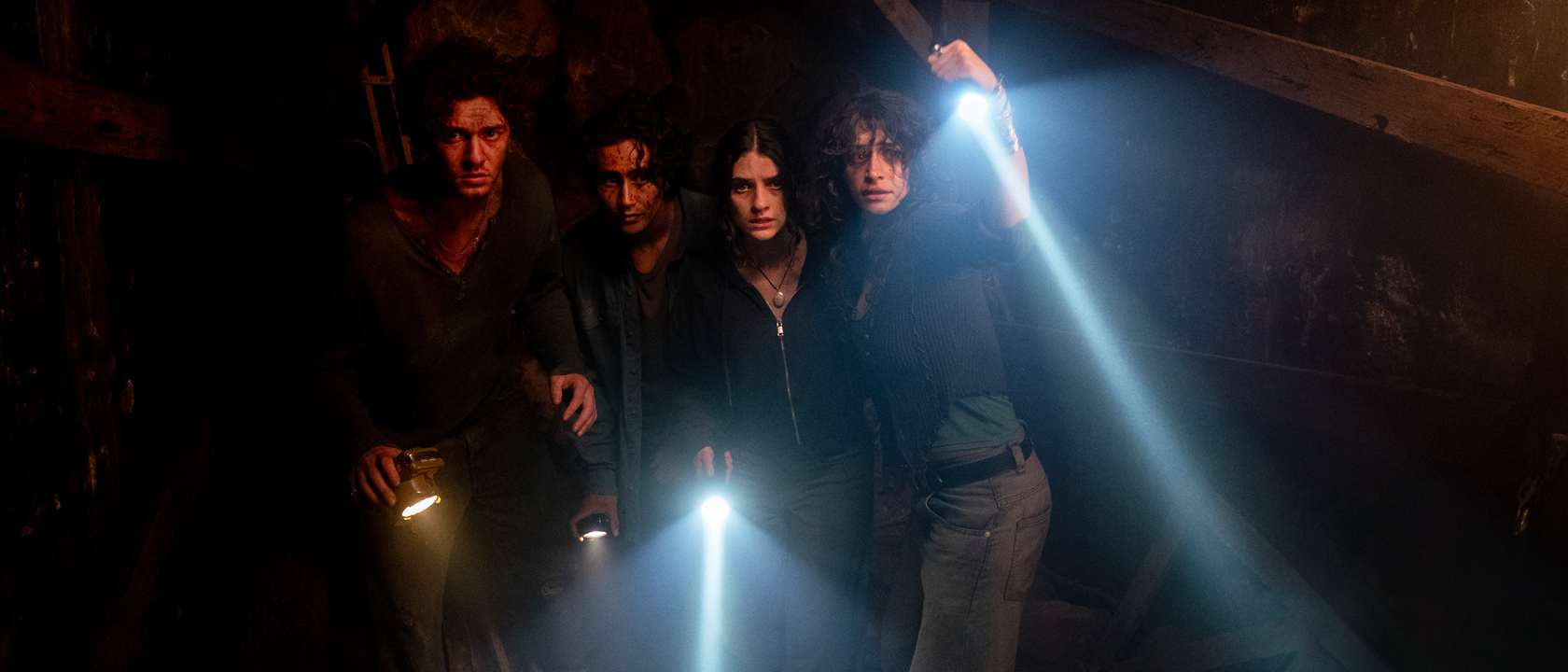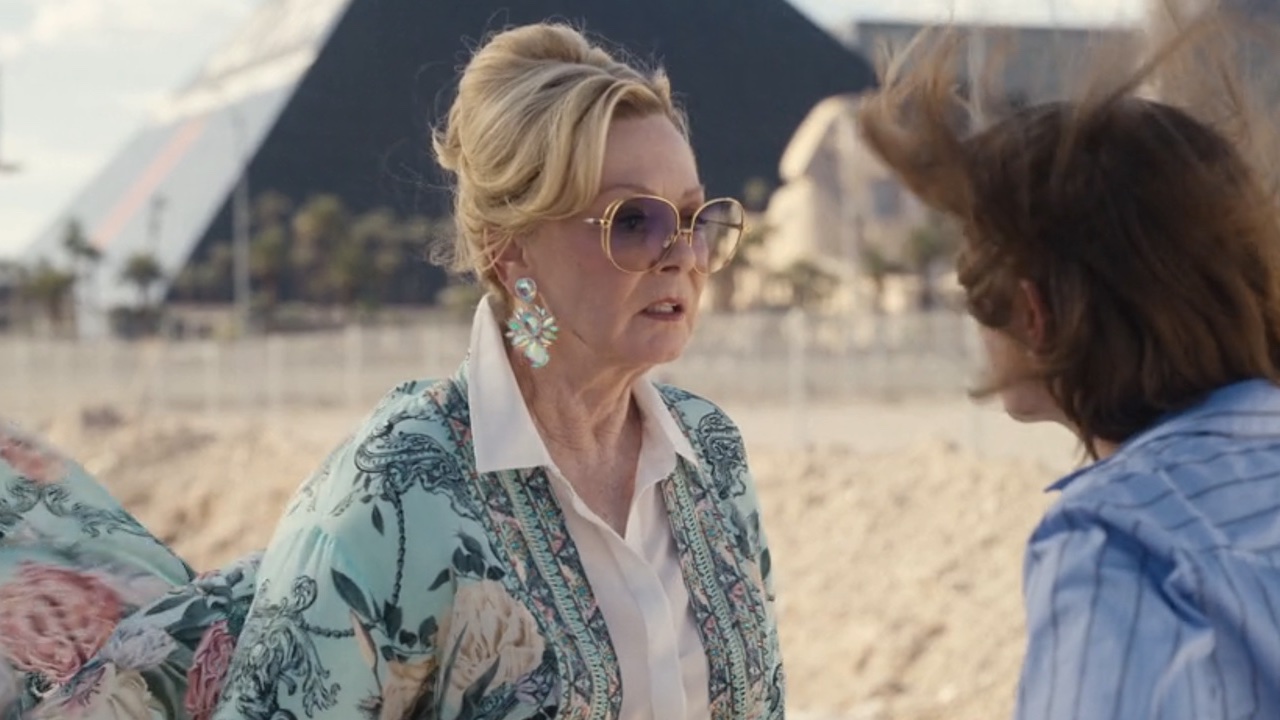What is it about us as a society that makes us keep outdated art forms like opera or ballet alive? Is it guilt over listening to too much hip hop? Is it penance for making rich people like P. Diddy? Do we try and convince ourselves that ballroom dancing is artistic and beautiful because we feel bad about allowing Stephen Baldwin to remain on the planet? Come on, let’s be honest, fat women singing in falsetto isn’t really that good. Maybe we should also consider the idea that compared to dance floor pelvic thrusting, ballroom dancing flat out stinks. I nearly fell asleep when forced to sit through Baz Luhrmann’s Strictly Ballroom, and had little reason to think Shall We Dance? would fare much better.
Strangely enough it did. Shall We Dance? is yet another remake of a Japanese import, and though I’ve never seen the original (I make it a point to avoid Japanese dancing unless Bill Murray is close by), I’m told this new American version follows it pretty closely. The American version stars Richard Gere as a bored lawyer named John Clark who passes a dance school every day on the train home from work. Every day he goes home to his humdrum suburban life, his wife, his kids, and then back the next day to his extremely high paying, but listless job. He seems satisfied, so satisfied that in fact his wife remarks that she never knows what to buy him, since he never wants anything. That comment sticks with him, and eventually he decides he wants the hot Latin momma he sees hanging out the window of Miss Mitzy’s Dance School as his commuter train whizzes past.
This sudden desire seems wildly out of character for dull Mr. Clark, but Shall We Dance pushes on with it anyway. Suddenly Mr. Clark is enrolled in beginning ballroom dance, partnered up with a fat guy practicing for his wedding (Omar Benson Miller), and an in the closet homosexual (Bobby Canavale) who pretends he’s learning to dance to impress women. Rather than simply tell his wife he’s taking dance lessons, Mr. Clark throws out a few poorly considered lies to cover up his evening absences. Since she’s a cliché high society wife, rather than simply ask him what’s up, Mrs. Clark (Susan Sarandon) assumes he’s cheating on her and enlists the services of a pair of private investigators to catch her wayward husband in the act. Eventually, John’s initial sexual attraction is replaced by a bizarre love of dance and his adulterous longing for Paulina (Jennifer Lopez) is forgotten.
Here’s the thing: Ballroom dancing is boring. It just is. I’m not interested in the artistry of it, am not impressed by it, and am not really that excited about watching it. Granted, I can’t pull it off myself, but I’m also really lousy at algebraic division. I certainly don’t want to see a movie about solving higher math. Ballroom dancing is the sort of activity I’d no doubt have a lot of fun doing, but can’t imagine intentionally sitting and watching others do. Now that I think of it, it’s much like the tired stats and numbers sport of baseball. The best baseball movies offer more than just an endless string of tedious pitches. They’re tricked up, have a human interest element, creative camera work, and crazy players named “Wild Thing”. No one wants to sit and just watch a guy swing a stick.
Shall We Dance doesn’t have a dancer with his own theme song, but it also isn’t as bland and lifeless as the dance it’s wrapped around. Part of the reason for that is the cast of wacky characters they’ve surrounded the flatlined Richard Gere with. For instance, the detectives Mrs. Clark hires are an absolute riot, almost too original and well done to be wasted in this film. Len Cariou and Nick Cannon absolutely steal the film as those two super sleuths, and the movie could only have been better were a reason found to work in more of them. I wish someone smart would pick them up and give them their own crazy detective flick, sans the competitive slow dancing.
John Clark’s dancing partners aren’t half bad either. Bobby Canavale, who came up big last year in the little watched movie The Station Agent, adds a lot of energy to the film while Omar Benson Miller pitches in a little heart. Stanley Tucci brings a string of laughs as an anal retentive lawyer with a double life underneath an outrageously hairy wig. These supporting characters are absolutely essential to the film because the character of John himself, as written, doesn’t have much to offer. I don’t know if it’s simply because Gere is on autopilot or if John Clark was intentionally scripted as an emotionally distant stiff, but even in his darkest moments the man never really emotes with more than a disinterested shout. Put him in a tux, let him dance, and sure, Richard Gere looks pretty debonair. But once you get past the James Bond exterior, is there anything else there? I didn’t see it. For an emotionally sensitive character facing some sort of weird late-life crisis, John Clark seems pretty disconnected.
By contrast, stoicism works well for Jennifer Lopez, who seemed doomed to fall off the circle of the earth in the face of overwhelming paparazzi bashing. Now, as her career has plummeted she’s fallen back again on dancing. It works. Gone is the pretentious bitch character we’ve all seen so much of from her these past few years. In its place is a quiet, damaged character lingering somewhere on the edges of the film instead of demanding the JLo diva limelight. Lopez is an incredibly talented dancer and a decent actress when she’s toned down and given a supporting role. Hopefully she’ll give us a little more like this in the future and less leading man of the moment romantic comedy.
Even though Shall We Dance is a movie about ballroom dancing with lawyers, it isn’t a total snooze. It succeeds on the shoulders of smart directing and a talented supporting cast, in spite of bland subject matter and disinterested work from leading man Richard Gere. I’m still not impressed with the cha-cha, but I did like watching Stanley Tucci attempt it wearing flaming pants. You don’t need to like baseball to get a kick out of Major League, and you don’t need to care about ballroom dancing to sit through Shall We Dance. In the end, the best parts of Shall We Dance have more in common with Best in Show than Strictly Ballroom, and the result is a movie fun enough to keep your attention for an hour and a half, but incapable of making any real emotional connection.











